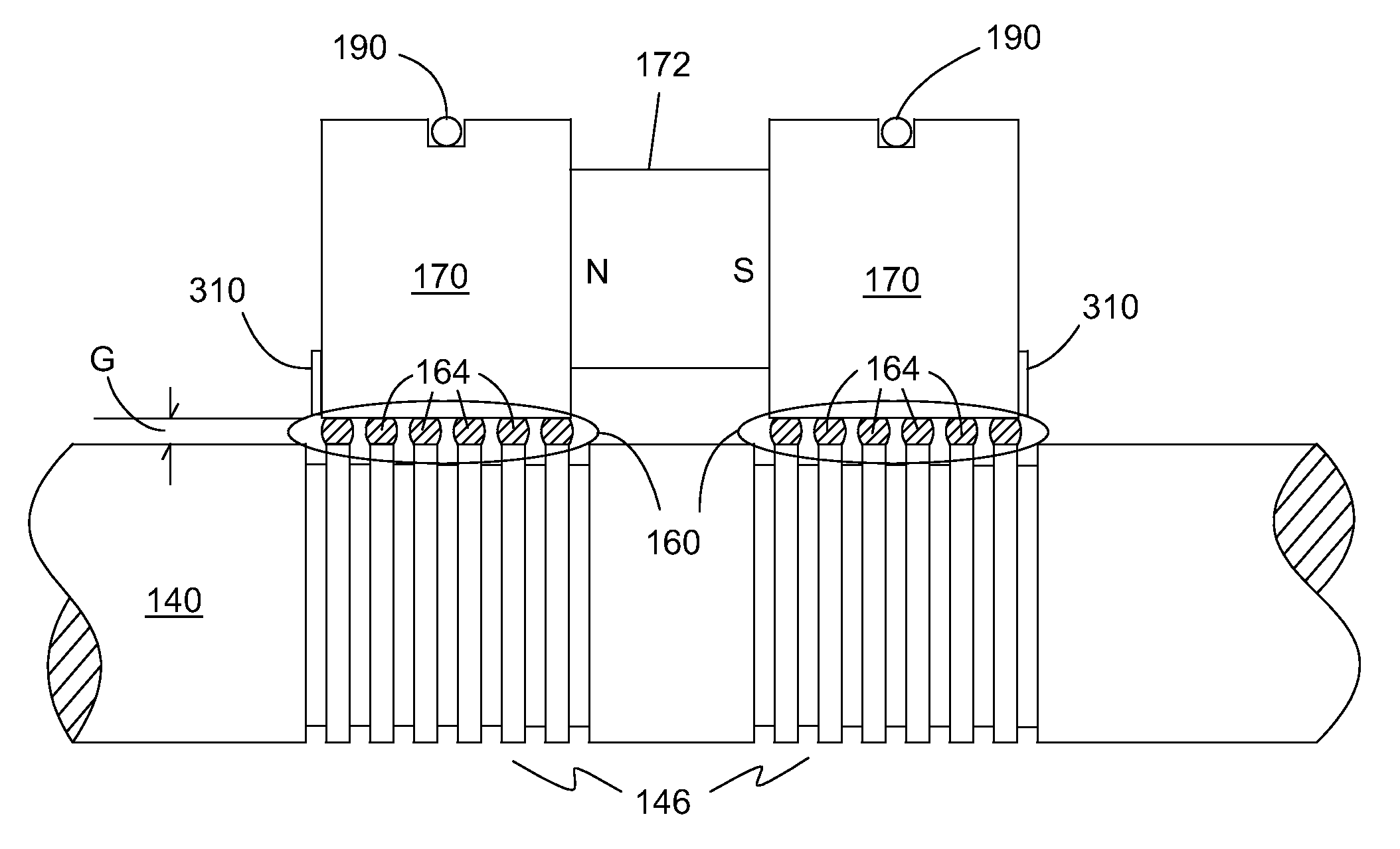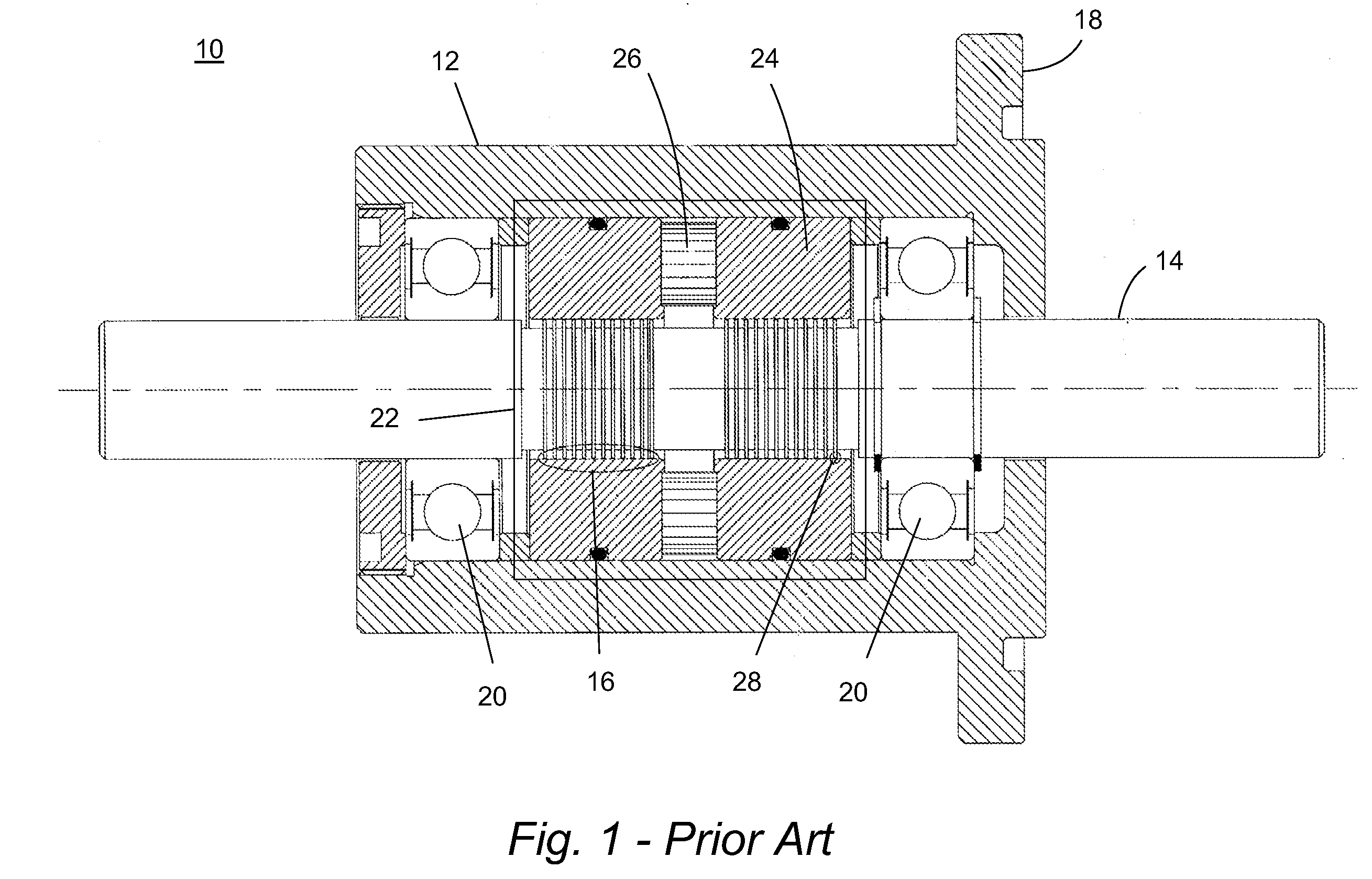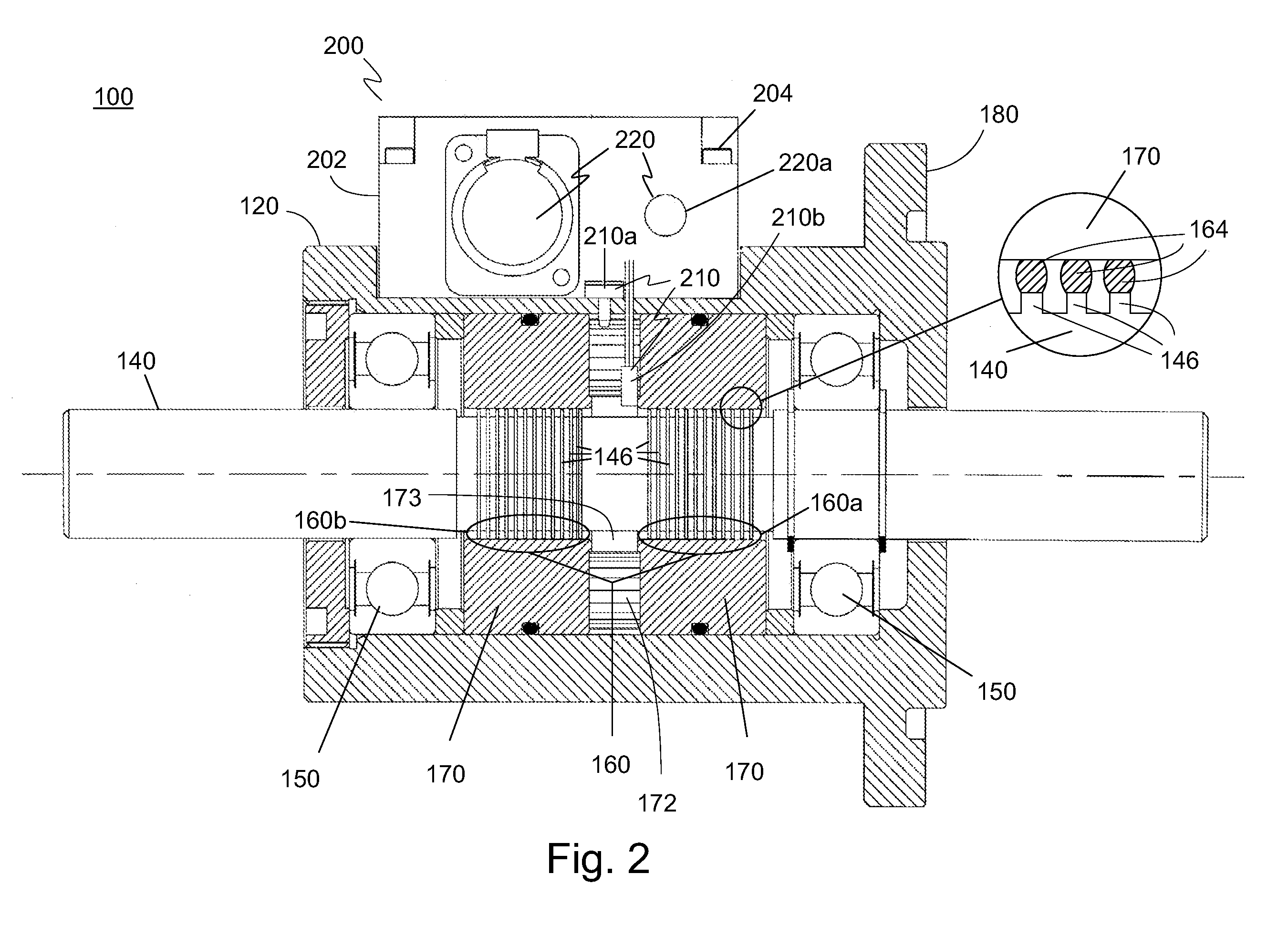Magnetic fluid rotary feedthrough with sensing and communication capability
a magnetic fluid and rotary technology, applied in the field of magnetic fluid rotary feedthroughs, can solve the problems of loss of yield or complete ruination of products, slow and steady evaporation of oil, and difficult to solve the problem of dynamic rotary vacuum sealing, etc., to achieve low evaporation rate and easy identification
- Summary
- Abstract
- Description
- Claims
- Application Information
AI Technical Summary
Benefits of technology
Problems solved by technology
Method used
Image
Examples
Embodiment Construction
[0033]The preferred embodiment of the present invention is illustrated in FIGS. 2-3. FIG. 2 shows one embodiment of a magnetic fluid rotary feedthrough 100 of the present invention in a partial cross-sectional view. Rotary feedthrough 100 includes a feedthrough housing 120 and a rotary shaft 140 that extends out of feedthrough housing 120. Shaft 140 is magnetically permeable and has two sets of stages or teeth 146. Housing 120 includes a vacuum compatible flange 180 for mounting the rotary feedthrough 100 to a vacuum chamber. Shaft 140 is typically supported by a pair of bearings 150 that are disposed on either side of the magnetic fluid seal 160. The magnetic fluid seal 160 includes two stationary, magnetically-permeable elements 170, which are referred to as pole-pieces. Pole-pieces 170 carry magnetic flux from a permanent magnet or magnets 172, disposed between pole-pieces 170. The magnetic flux is concentrated at shaft 140 by a series of stages or teeth 146 cut into shaft 140. T...
PUM
 Login to View More
Login to View More Abstract
Description
Claims
Application Information
 Login to View More
Login to View More - R&D
- Intellectual Property
- Life Sciences
- Materials
- Tech Scout
- Unparalleled Data Quality
- Higher Quality Content
- 60% Fewer Hallucinations
Browse by: Latest US Patents, China's latest patents, Technical Efficacy Thesaurus, Application Domain, Technology Topic, Popular Technical Reports.
© 2025 PatSnap. All rights reserved.Legal|Privacy policy|Modern Slavery Act Transparency Statement|Sitemap|About US| Contact US: help@patsnap.com



